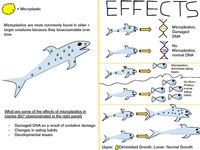
Photo from wikipedia
A 42-d commercial nursery study was conducted utilizing 1,296 pigs (DNA genetics, BW: 5.27 ± 0.05 kg; 21-d of age) that evaluated the efficacy of replacing animal protein products while… Click to show full abstract
A 42-d commercial nursery study was conducted utilizing 1,296 pigs (DNA genetics, BW: 5.27 ± 0.05 kg; 21-d of age) that evaluated the efficacy of replacing animal protein products while also reducing SID Lys in nursery pig diets with a bioactive peptide-based feed additive program on growth performance, efficiency, health and well-being, and profitability. The dietary treatments were applied over 3 phases (PH) and were fed based on a feed budget: PH1: 2.27 kg/pig [Positive Control (PC): 1.46% SID Lys; 3,415 kcal/kg ME]; PH2: 4.54 kg/pig (PC: 1.42% SID Lys; 3,395 kcal/kg ME); and PH3: 15.88 kg/pig (1.26% SID Lys; 3,395 kcal/kg ME). The four dietary treatments were: 1) PC: complex diet in PH1-2 and standard diet in PH3; 2) negative control (NC): diet in PH1-2 devoid of fishmeal and spray-dried plasma and -0.10% SID Lys compared to the PC and PH3 the same as the PC; 3) PEP1 in PH1-2 was the NC diets plus Peptiva® Maximo (Vitech Bio-Chem Corp., Orange, CA) fed at 0.25% and in PH3 the PC + Peptiva® Optimo fed at 0.1%; 4) PEP2 in PH1-2 was the NC diets plus Peptiva® Maximo fed at 0.50% and in PH3 the PC plus Peptiva® Optimo fed at 0.2%. Pen weights of pigs and pen feed consumption were evaluated in 2-wk increments and overall. Additionally, animal health and well-being and economics were evaluated for the entire nursery program. Overall, pigs fed the PEP1 diets had a better FCR (with or without mortality adjustments) than either control group, while the PEP2 group was intermediate. These results indicate that highly digestible proteins, such as fish meal and spray-dried plasma, can be removed from early nursery diets while supplementing with bioactive-peptide feed additive strategy to optimize performance and economics of production.
Journal Title: Journal of Animal Science
Year Published: 2021
Link to full text (if available)
Share on Social Media: Sign Up to like & get
recommendations!